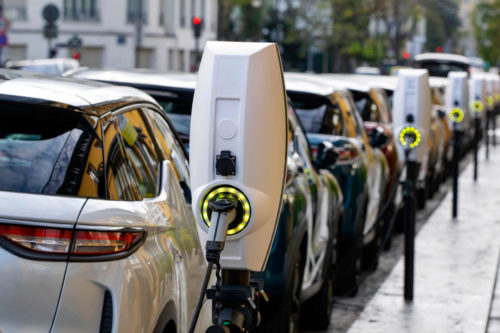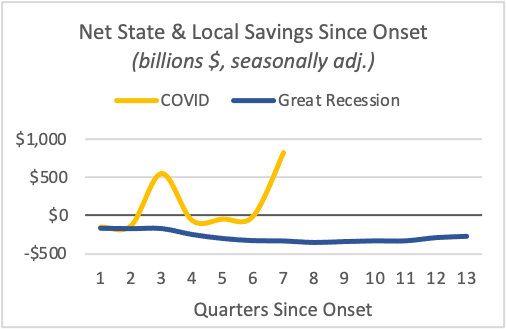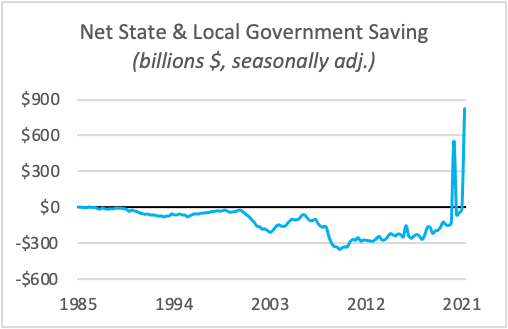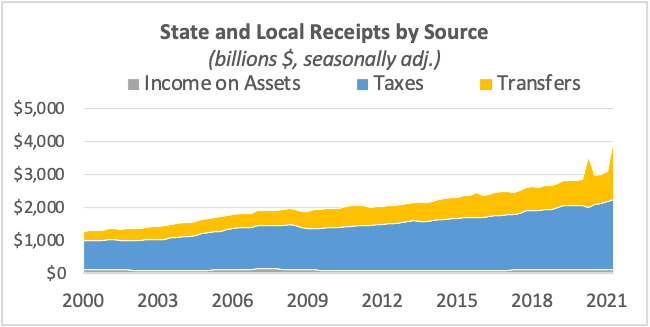
Booming State Budgets Present a Huge Climate Action Opportunity
State and local leaders have long formed the vanguard of US climate action. They continue to set the pace for climate ambition and are the on-the-ground doers when it comes to acting on that ambition. Cities and states have led the way on clean energy deployment, vehicle emissions standards, controls on methane, and much more. Building on that progress will be critical to meeting the United States’ climate goals.
Historically, however, fiscal realities have constrained the scope of state and local investments in climate action, limiting their full potential. While states and cities have led on climate action in a major way, they have done so against an often challenging economic backdrop. In the past decade especially, belt-tightening has defined state budgets. Cash-strapped states responded to the Great Recession and balanced budget requirements by deferring investments, cutting services, and trimming payrolls. Fortunately, the fiscal picture looks far different now.
A “Once-in-a-Lifetime” Opportunity
The combination of flexible federal recovery funds, higher-than-expected tax revenues, and an effective fiscal response to COVID-related economic shocks means that state and local governments have significant resources at their disposal to make large-scale climate investments today, including in areas like transit, EV infrastructure, clean energy, and housing.
New federal funding streams from the Infrastructure Investments and Jobs Act and a myriad of other federal programs only create additional opportunities. To take one example, FEMA’s Building Resilient Infrastructure and Communities program—which provides grants to fund hazard mitigation and community resilience before disaster strikes—saw its funding double early in the Biden administration. Even notwithstanding targeted federal funding, many state and local policymakers’ capacity to invest is simply unprecedented, as their savings trajectories below illustrate.


The budget boom is driven in part by an impressive recovery in state tax revenue, but primarily by a tremendous infusion of flexible federal dollars. Nationally, state and local tax receipts have rebounded—exceeding pre-pandemic levels by roughly 10 percent. But this rebound is not evenly distributed; states with less diversified economies and less progressive tax structures still face gaps. Instead, the infusion of flexible-use federal recovery funding—most recently through $350 billion in Coronavirus State and Local Fiscal Recovery Funds (CSLFRF) grants—helped make budgets more than whole from COVID losses.
This extraordinary injection of federal aid has put state and local finances in a historic position. The net savings level of cities and states (i.e., the difference between dollars in and dollars out) is higher than ever, as federal aid exceeded revenue loss many times over, leaving many states with their largest budget surpluses to date. The result of this budget boom? A “once-in-a-lifetime” opportunity for transformative investments.
Driving Climate Action and a Strong Recovery
This opportunity can be harnessed to drive climate action and invest in a strong recovery. CSLFRF put billions of unanticipated investment ability on the table to be used across broad categories of eligible spending. It is intended to help meet pandemic response needs and fuel a recovery that builds a stronger and more equitable economy. With good reason, many states have put significant sums toward COVID response priorities, including shoring up unemployment trust funds and funding the public health response, and in many cases, states may see ongoing need to provide direct relief for households and communities.
Yet significant funding is still on the table, creating a tremendous opportunity to invest in long-term priorities. States and localities were not required to immediately spend these grants (and many have not), and the full amount will not be totally distributed until 2022—leaving a still-open window to make large down payments on transformative investments that provide long-lasting returns. And investments in climate priorities—including eligible spending on EV infrastructure, clean energy research, workforce development, transit-oriented housing, and climate-resilient infrastructure—fit the bill. They are at their core investments in stronger, safer, and more resilient systems, which will yield dividends for years to come.
Already, many states are showing how a strong recovery and a healthier, climate-safe future can and should go hand in hand. For example, Maine has allocated millions of dollars to support electricity grid upgrades that will accelerate economic recovery, especially in rural areas, and to accelerate clean energy innovation. New Jersey has directed spending toward bolstering the energy efficiency of schools and small businesses. Florida has channeled large-scale investment toward adaptation and mitigation projects to improve climate resilience. And Colorado is replenishing resources for affordable public transit and expanded low-carbon transportation. These types of investments can enhance well-being, boost productivity, improve accessibility, connect communities, and bolster resilience—investments crucial to fueling a strong recovery and healthier future.
Today’s state and local budget windfall opens the door to forward-looking investments, but it also comes with serious risks. First, the risk of relying on federal recovery funds to cover costs for ongoing programs—creating a steep and painful “fiscal cliff” when funding dries up—is well-documented by state experiences during the Great Recession. This opportunity also opens the door to investments that could slow progress toward a safe climate future, for example by making land use decisions that entrench car dependence or perpetuate sprawl. Finally, the opportunity cost of neglecting big-ticket investments is high; opportunities on this scale are few and far between.
Turning Ambition into Action
To be a climate leader today means recognizing the role that climate investments can play in a strong, inclusive, and enduring recovery. Looking at state and local finances today reveals a rare opportunity to seed large-scale investments. For nonfederal climate leaders, the budget boom is a critical tool for translating climate ambition into aggressive action. By capitalizing on this unexpected financial strength, state and local governments can fuel a recovery that creates a safer, more resilient, and cleaner future. In doing so, they can use a once-in-a-lifetime opportunity to make investments with long and impactful lifetimes.
